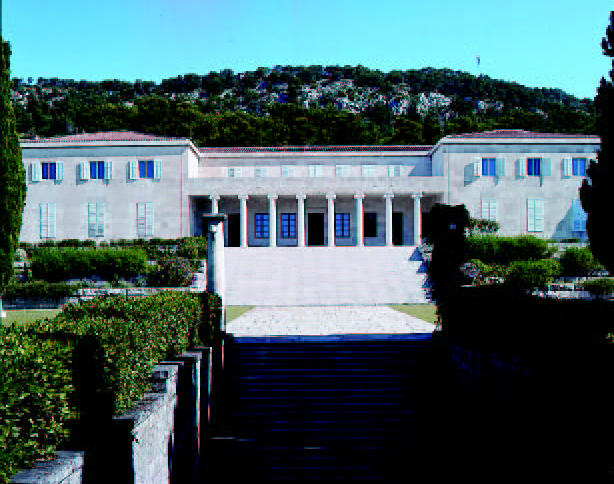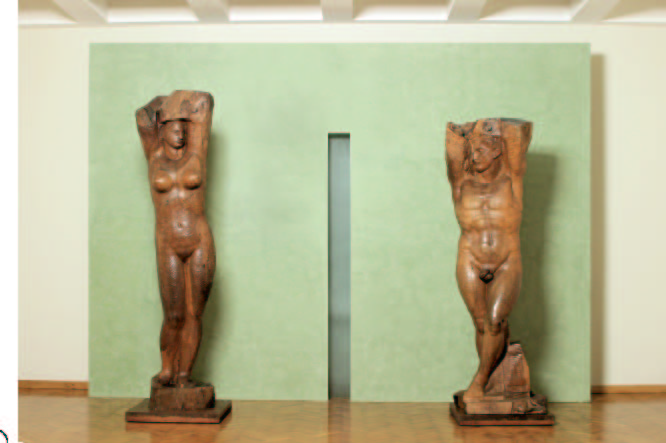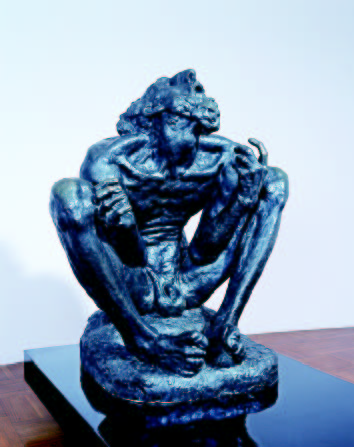

gallerija ivana mestrovica
Victor Popovic (split) |
 |
|
| Established
in 1991, Ivan Mestrovic Foundation is a museum institution which combines
into a united whole the legacy Ivan Mestrovic bequeathed to Croatian people
in 1952: Ivan Mestrovic Gallery and Kaptelet/Crikvine in Split, Mestrovic
Studio in Zagreb and the church of Holy Redeemer - the mausoleum of the
Mestrovic family in Otavice, with the belonging works of art. The Foundation’s primary mission is to protect and preserve the objects and Ivan Mestrovic’s works of art, interpret them and appropriately present them to the public. The building of Ivan Mestrovic Gallery, constructed from 1931 until 1939 after the general design by Ivan Mestrovic, was conceived as the residence of the artist and his family in Split, as well as his work place and partially a gallery. By opening its doors to the public in 1952, the Gallery started to function exclusively as the exhibition gallery for Mestrovic’s works of art. By its new permanent exhibition of 1998, based on a syntheses of the contemporary museological concept and of the architectonic design, Ivan Mestrovic Gallery presents in a new manner the works of art by the great Croatian artist. |
|
GALERIJA
IVANA MESTROVICA Setaliste I. Mestrovica 46, 21000 Split Croatia tel. +385 21 340 800 fim-st@fim.hr www.mdc.hr/mestrovic/ |
 |
Ivan
Mestrovic, |
Adam and Eve |
| Viktor
Popovic Roden 1972. godine u Splitu / Born in Split, 1972 Zivi i radi u Splitu / He lives and works in Split viktor.popovic@st.htnet.hr http://viktorpopovic.tripod.com/ |
Bez naziva / Untitled, 2004 |
Spatial thinking in the context of painting medium
and the translation of the elements of reality into the language of industrial
material, stand out as the leading clues for the following of the visual
exploration by Viktor Popovic. The control of gesture, that is, of the
trace of action, based in the best tradition of the European art of the
second half of the twentieth century, registers as an important aspect
in the appreciation of the great part of this artist’s production. Dalibor Prancevic |
|
 |
Ivan
Mestrovic, Job / Giobbe, 1946 |
Job, one of the most known works of Ivan Mestrovic, outstanding Croatian
sculptor, was conceived as a result of the traumatic experience of World
War II. In 1941 was the artist imprisoned by the fascists in Zagreb, where
he was nevertheless underhandedly given some sheet s on which he could
draw. In that difficult context did he carry out several drawings, amongst
whic h Job stands out. After the Liberation, in Rome, this drawing inspired
the artist the carrying out |
Graziano
Vignolo |
Lamenti
incatenati, 2004 |
Visiting the Mestrovic Foundation in Split, Graziano
Vignolo has made a virtual journey through the culture, the way of thinking
and the passions of sculptor Ivan Meptrovi´c thus retaining a strong
suggestion, as well as a deep sense of up-to-dateness. The figure of Job,
of whom Ivan Mestrovic set up a sculpture portrait during his imprisonment,
has enticed Vignolo’s imaginary. The artist has conceived a Mestrovic
Job and has re-unified the thought which originates the project (the drowing),
the work itself and thespace-prison, by a dramatic rendering obtained
through light and sound. An evocative interpretation of the work, full
of references to the present time and to the Emilia Marasco |
|

|
Mestrovic Foundation |
The Ivan Mestrovic Palace was built in Split between 1931 and 1939. Mestrovic himself made the original plans based on his own design, the architects Harold Bilinic and Lavoslav Horvat developed them, and the builder Marin Marasovic was in charge of the works. The construction was built section by section, starting from the East and ending with the western parts, and it was designed to serve living, working, and exhibition purposes. |
| Guillaume
Ségur Roden u / Born in 1978 Zivi i radi u / He lives in Lyon and works in France i / and in Europe segurguillaume@hotmail.com |
Actual
work, 2004 |
Guillaume Ségur is pursuing his work about
time and environment at the Mestrovic Museum in Split. He intends to develop
a virtual play, aligned to the Museum’s website. Estelle Nabeyrat |
|